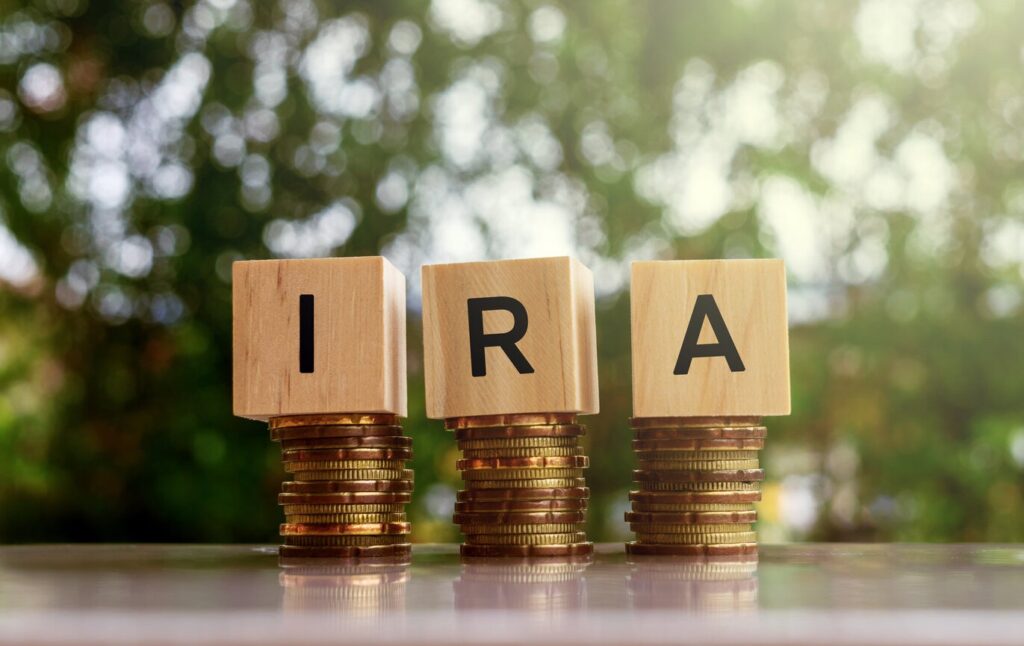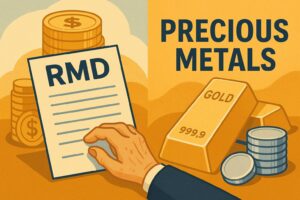
In today’s volatile economy, protecting your retirement savings goes beyond traditional assets.
That’s why many investors are turning to Gold IRAs — offering the dual benefit of wealth preservation and Gold IRA tax benefits that can strengthen long-term financial planning.
Whether you choose a Traditional or Roth Gold IRA, understanding the tax rules can help you build a more resilient and efficient retirement strategy.
Understanding Gold IRAs and Their Tax Classifications
A Gold IRA is a self-directed retirement account that holds IRS-approved physical precious metals—such as gold, silver, platinum, and palladium—instead of stocks or mutual funds. As highlighted in Why Gold IRA is Built for Inflationary Times, these accounts come in several tax classifications, each offering unique benefits.
Traditional Gold IRAs: Tax-Deferred Growth
Traditional Gold IRAs offer tax-deductible contributions, allowing you to reduce your current taxable income. As noted by Bankrate, “Contributions to traditional Gold IRAs may be tax-deductible, and earnings grow tax-deferred until retirement.”
With a Traditional Gold IRA:
- Contributions may be tax-deductible, lowering your taxable income in the current year.
- Investments grow tax-deferred—you pay no taxes until you take distributions.
- Distributions are taxed as ordinary income in retirement.
This setup is often ideal if you expect to be in a lower tax bracket after retiring.
Roth Gold IRAs: Tax-Free Growth Potential
Unlike Traditional IRAs, Roth Gold IRAs offer no immediate tax deduction but provide potentially tax-free growth and withdrawals:
- Contributions are made with after-tax dollars—no upfront deduction.
- All qualified withdrawals in retirement are completely tax-free.
- No required minimum distributions (RMDs) during your lifetime.
A Roth Gold IRA may be especially valuable if you expect future tax rates to rise or if you want to pass assets tax-free to heirs. It’s one of the most powerful Gold IRA tax benefits for those focused on legacy and long-term compounding.
SEP and SIMPLE Gold IRAs
Self-employed or small business owner? SEP and SIMPLE IRAs allow larger contribution limits and tax deductions — just ensure your custodian supports precious metals in these plans.
Get Gold & Silver Insights Direct to Your Inbox
Join thousands of smart investors who receive expert analysis, market updates, and exclusive deals every week.
Maximizing Tax Advantages of Gold IRAs
Strategic Contribution Timing
According to BP Trends, “Contributing to a Traditional Gold IRA just before tax filing can reduce your previous year’s tax liability, providing immediate tax savings.”
Consider these approaches:
- Make contributions early in the year to maximize tax-deferred growth
- Utilize “catch-up” contributions if you’re over 50
- Time conversions between IRA types during lower-income years
Tax-Loss Harvesting with Complementary Investments
While your Gold IRA grows tax-advantaged, you can implement tax-loss harvesting strategies with your non-IRA precious metals investments to offset capital gains in other areas of your portfolio.
Roth Conversion Strategies
Converting a Traditional Gold IRA to Roth can create a taxable event, but may offer long-term tax-free growth.
- Best times to convert:
- During low-income years
- When gold prices dip
- If you expect future tax hikes
⚠️ Note: Roth conversions are permanent and taxable. Consult a tax advisor before proceeding.
IRS Compliance: What You Need to Know
Eligible Metals:
The IRS requires specific purity standards:
- Gold: 99.5% or higher (except American Eagles at 91.67%)
- Silver: 99.9%
- Platinum/Palladium: 99.95%
Custody & Storage Rules
Gold IRAs must store metals in an IRS-approved depository via an authorized custodian (e.g., Brinks, IDS). Taking personal possession is considered a taxable distribution.
Contribution Limits and Deadlines
- $7,000 annual contribution limit for 2025 (under age 50)
- $8,000 annual contribution limit for those 50 and older
- Contributions can be made until the tax filing deadline
Understanding Withdrawals & RMDs
Required Minimum Distributions (RMDs)
- Traditional Gold IRAs require RMDs starting at age 73.
- Failure to take RMDs may result in a 25% penalty.
- Roth Gold IRAs are exempt from RMDs during your lifetime.
Consider taking RMDs in-kind (physical gold) to avoid selling during unfavorable market conditions.
Early Withdrawals
- Withdrawals before age 59½ trigger a 10% penalty plus income tax.
- Some exceptions apply (e.g., first-time home purchase, higher education, disability).
Estate Planning with Gold IRAs
- Roth Gold IRAs can be passed to heirs tax-free, under current law.
- Traditional Gold IRAs pass with associated tax obligations.
- Physical metals provide a durable, inflation-resistant legacy asset.
Gold has historically performed well during periods of high inflation or economic uncertainty. Combining this inflation hedge with tax-advantaged growth creates a powerful wealth preservation strategy. During inflationary periods, your gold holdings may appreciate while simultaneously growing in a tax-advantaged environment, essentially allowing you to protect your purchasing power without generating immediate tax liabilities.
Comparing Gold IRA Tax Benefits vs. Other Retirement Accounts
Traditional IRA
- Tax Benefit: Tax-deferred growth
- Investment Flexibility: Primarily paper assets (stocks, bonds, mutual funds)
- RMD Rules: Required Minimum Distributions begin at age 73
Traditional Gold IRA
- Tax Benefit: Tax-deferred growth
- Investment Flexibility: Holds IRS-approved physical precious metals
- RMD Rules: Required at age 73
Roth IRA
- Tax Benefit: Tax-free withdrawals in retirement
- Investment Flexibility: Paper assets only
- RMD Rules: No RMDs during the account holder’s lifetime
Roth Gold IRA
- Tax Benefit: Tax-free withdrawals in retirement
- Investment Flexibility: Physical metals (gold, silver, etc.)
- RMD Rules: No RMDs during the account holder’s lifetime
401(k)
- Tax Benefit: Tax-deferred growth, with potential employer matching
- Investment Flexibility: Limited—typically mutual funds and employer-selected options
- RMD Rules: Required at age 73 (unless still employed by sponsoring employer)
Gold IRAs stand out by offering tangible asset protection, especially valuable during inflation or economic instability.
Final Thoughts: Building a Tax-Efficient Retirement Strategy
Gold IRAs offer more than portfolio diversification — they unlock powerful Gold IRA tax benefits that can help preserve wealth, reduce taxes, and enhance your legacy. Whether your goal is to reduce your tax burden, hedge against inflation, or leave a legacy, a Gold IRA can play a meaningful role.
Before taking action, consult a qualified financial or tax advisor. Navigating IRS rules and contribution strategies is complex—but with the right guidance, you can make Gold IRAs work for your long-term goals.
Want to explore how precious metals fit into your portfolio? Whether you’re looking to invest in gold, add silver to your IRA, or build a balanced strategy, GoldSilver is here to help you make confident, informed decisions.

GoldSilver: Investing in Physical Metals Made Easy
GoldSilver lets you invest in real physical precious metals with flexible options to buy, sell, store, and take delivery. You’re in complete control.
Open an Account








![Is Now the Best Time to Buy Silver? [Silver 2025–2030 Forecasts]](https://goldsilver.com/wp-content/uploads/2025/11/price-of-silver-300x155.jpg)





